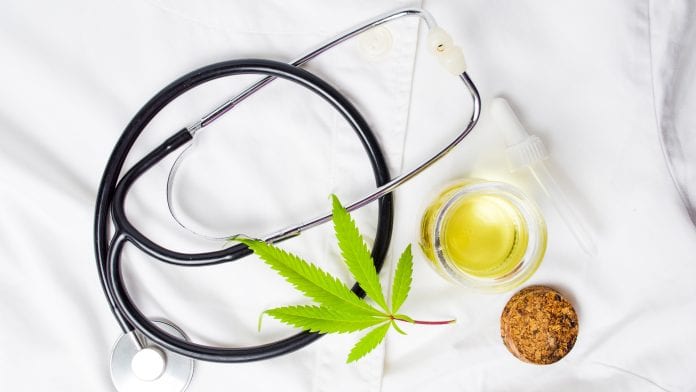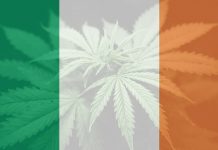
Emerald Clinics CEO Dr Michael Winlo highlights the unique benefits of building real world evidence bases in patient-focussed clinical practice.
Emerald Clinics’ asks ‘why haven’t cannabinoid-based medical products (CBMPs) become mainstream medical treatments around the world’? One likely reason is that nearly all CBMPs have arrived without the typical package of product specific, trial-generated clinical evidence we expect from new drugs. As a result, there is a persistent and deep seated clinical apprehension amongst regulators, payers and prescribers which is restricting the adoption of these treatments.
Emerald sees this unprecedented situation as a commercial and clinical opportunity to demonstrate Emerald Clinics’ unique ‘evidence-generating care’ model, which can safely provide patient access to CBMPs while also co-creating robust and ethically sourced clinical evidence with Emerald Clinics’ patients. The clinical evidence Emerald produces has high commercial value as it can help guide the use of CBMPs, improve their ongoing clinical development and support product registration efforts.
Knowledge and competency gaps across the health ecosystem
CBMPs are purported to have broad clinical applications; from helping manage chronic pain, to improving sleep, to reducing seizure frequency in childhood epilepsy, to name only a few.
However, very few licensed CBMP producers are investing the substantial time and resources required to conduct large randomised clinical trials (RCTs) – considered the gold standard for generating clinical evidence – which are required by major regulators to conclusively demonstrate product safety and efficacy. Couple this with a rapidly increasing variety of products and formulations available, as well as some ‘regulation naive’ promotional practices; and you have a situation where neither clinicians nor regulators are willing to make any strong endorsement as to what to prescribe, for whom and for how long.
If we are to treat CBMPs like all other medicines then there will be responders and non-responders, drug interactions and dose effects, adverse events and contraindications. This is why major regulators like the US Federal Drug Administration (FDA) are now starting to issue warning letters to companies making health benefit claims about their products without the requisite clinical evidence to back up those statements.
As a consequence, major knowledge and competency gaps exist across the entire health ecosystem involving regulators (are these safe?), patients (will it work for me? What are the side effects?), clinicians (which patients to prescribe for? What product? What dose? What contraindications?), payers (is it cost effective?); and, of course, producers (what do we make?). This widespread clinical apprehension is constraining growth the industry. This also means that, in conservative markets like Australia and the UK, patients are only able to obtain CBMPs by paying out of pocket and through special access pathways for unregistered medicines.
Consider the example in Australia, where patient access is carefully titrated by the Therapeutic Goods Administration’s (TGA) Special Access Scheme (SAS): a compromise that allows limited patient access (after a lot of case by case argument and significant out of pocket expense).
Learning from the experience of every patient
Patient demand for access to CBMPs is growing, particularly among a not insignificant number of patients experiencing profound benefits with CBMPs after years of ineffective ‘standard of care’ treatments – consider the presentation of a chronic pain patient requiring every larger doses of opiates. However, despite the rapid growth in SAS approvals, the truth remains that these numbers reflect only a small proportion of the total number of patients who might benefit from CBMPs, nearly Australian CBMPs are paid for out of pocket; and most scripts are written by only a small number of ‘early adopter’ doctors.
As a result, we are faced with an intriguing challenge: how can we provide access to patients in need, while at the same time generating the kind of quality clinical evidence that can correctly inform clinicians, regulators and payers of the true clinical and pharmacoeconomic benefits of CBMPs over the long term?
Emerald’s unique model has been intentionally designed to address this opportunity. We use technology and novel clinical routines so that the data collection and management disciplines common to clinical trials can operate on the frontline of care delivery. It is Emerald’s goal to learn from the experience of every patient in order to deliver exceptional care but also to improve the evaluation of new and emerging care models.
Emerald is encouraged by the changing attitudes of major global regulators like the European Medicines Agency (EMA) and the FDA, which are starting to look more critically at how clinical evidence is prepared and delivered to support medical product claims; or as they are more formally called, ‘market authorisations’. RCTs are under increasing scrutiny. There are a growing number of cases where key results from RCTs have not replicated in real world populations. In addition, despite high data quality, clinical trial evidence is often criticised for having low external validity – that is, because trial participants are carefully selected their particular trial outcomes do not always map to the wider general patient population, who often have a raft of additional comorbidities and complex social circumstances.
As a result, there is an increasing interest from major regulators in using real world evidence (RWE) to support medical claims. RWE is defined as clinical evidence derived from the careful analysis of real world data (RWD) sources, such as claims, electronic health records, product and disease registries, patient-generated data (including in-home settings) and other data that can inform on health status.
The great challenge with RWD as a source of RWE is that typical care settings capture clinical data for transactional reasons (for example in appointment booking, compliance or prescription management) or are in an unstructured, free text format. RWD must usually be curated intensively before it is suitable to be used as clinical evidence. So despite having high external validity, RWD suffers from low data quality.
Emerald Clinics’ unique data asset
Emerald’s approach has been to develop a clinical service that is optimised to product clinical data of exceptional quality and utility. Emerald Clinics’ philosophy is that every patient owns their data, but we invite them to share it anonymously in our clinical trial grade data capture system.
Emerald Clinics’ patients are also highly engaged. We spend a great deal more time with our patients and incorporate a broad range of quantitative health assessments that pay close attention to treatment effect and the patient experience. This helps us to evaluate in depth the safety and efficacy tradeoffs of new medicines such as CBMPs. The resulting clinical evidence has commercial value, in that it can inform therapy development, support pharmacovigilance programmes and also accelerate and support targeted clinical trials. Ultimately, Emerald’s unique data asset can be used to support product registration efforts at major regulators: this is an important watershed moment for any new product wishing to maximise access to patients in need.
A key challenge for care providers within these new models will be to capture data of sufficient richness and depth that it can be used to provide generalisable explanations for any anecdotal benefit and, to do it in a way that creates minimal impact to clinicians’ (and patients’) daily routines.
Emerald tackles this using its own clinical evidence to inform the practice of its clinicians. By providing feedback to our doctors we can reveal prescribing and outcome trends as well as unique patient characteristics that might influence product selection and guide treatment oversight. In addition, patients can also see their data so they can see how they are responding – or not responding – to treatment.
Revealing the true benefits of CBMPs
By closing these information feedback loops we are able to demonstrate a working example of a learning health system: a healthcare model where knowledge generation processes are embedded into daily practice to produce continual improvements in care. In other words, by creating our own clinical service powered by our own data service, Emerald can produce clinical evidence with both high quality and high external validity. Our model is also demonstrating that high quality data capture, analysis and sharing, if done right, can help reveal the true benefits of CBMPs whilst simultaneously improve access for patients in need.
If we are serious about uncovering legitimate medical indications for CBMPs, but remain unable or unwilling to commit the resources or time to complete RCTs, we will need to adopt these new models of care. The increasing acceptance of RWE represents a unique opportunity to evaluate the efficacy and safety of CBMPs within an updated care model that is explicitly designed to generate RWE from the ground up. The increasing acceptance of RWE and the increasing prevalence of digital health information alongside improving analytical techniques represents a unique opportunity to evaluate the efficacy and safety of new treatments directly in the line of care.
This is a big part of what also excites and motivates our team: the belief that the Emerald model could ultimately demonstrate a new way of practising medicine. One that is less transactional and more focussed on knowledge-creating with patients. By helping clinicians invest more time up front, we believe we can avoid missteps down the road as well as learn from the experience of every patient. Ultimately, CBMPs’ most significant contribution to medicine might be to inspire a new digitally driven way of caring for patients.
Dr Michael Winlo MBBS (Hons), MBA
Chief Executive Officer
Emerald Clinics
+61 1300 436 363
michael.winlo@emeraldclinics.com.au
Tweet @EmeraldClinics
www.linkedin.com/company/emerald-clinics/
This article will appear in the second issue of Medical Cannabis Network which is out in April. Click here to get your free subscription today.







